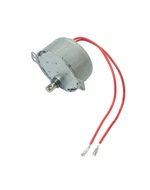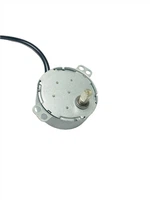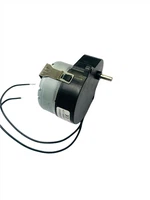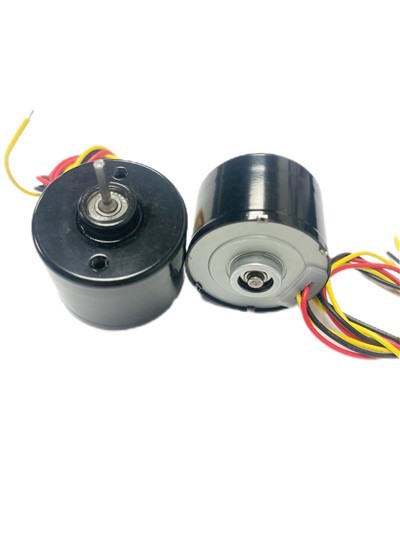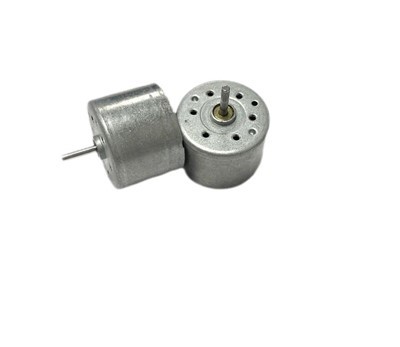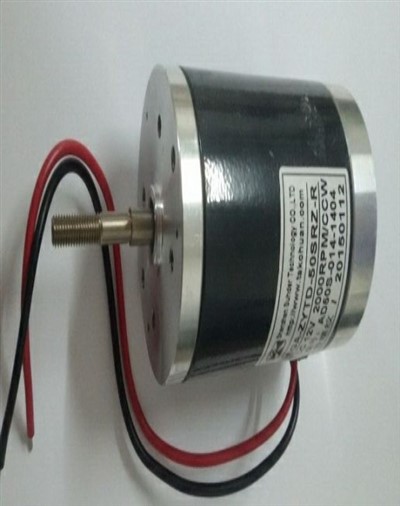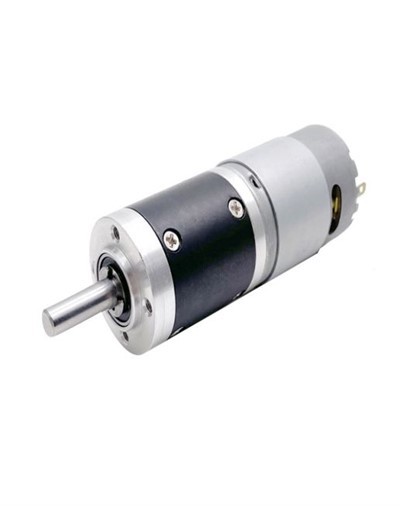Brushless DC Motor
Why Choose Us
Our certifications
The Taiwan factory of our company has passed the ISO9002 international quality system certification, the American standard UL quality certification, the European standard CE /EMC quality certification, and the RoHs environmental protection certification.
Have import and export rights
The domestic company has the right to import and export, and its products are exported to more than 30 countries, and it provides the most suitable motors and related technologies according to the different needs of customers.
Our products
Our company produces synchronous motors, bidirectional synchronous motors, hysteresis motors (HTS), sparrow machine motors, and powder metallurgy gears. DC brushless motors, planetary geared motors (LED UV), push rod motors, DC motors, DC geared motors, high self-made products, and continuously improve equipment quality production management to achieve more rapid and flexible services.
Our service
In order to meet customer requirements for product diversification, the company also imports Japanese Mabuchi motors as an agent, and 100% of the goods are picked up by Mabuchi warehouses, and can be delivered in Hong Kong and domestically.
Brushless DC motors sequentially energize an arrangement of electromagnetic coils on a motor's stator (stationary section) to produce a force on permanent magnets arranged on the motor's rotor (rotating section). Stator coils must be energized in a specific pattern with varying electrical and thus magnetic — Directions by a specialized driver. BLDC motors operate significantly more efficiently than brushed DC motors, given the same loads and speeds.Executing this pattern requires the driver to know the rotor's position at any given time. BLDC motors feature closed-loop control, typically via a Hall effect sensor or by detecting back EMF. Rotational output can be controlled with a high degree of accuracy by varying the speed of the coil sequence. BLDC motors share some similarities with stepper motors, but BLDCs are optimized for high speed, while steppers, which use an open-loop setup, are optimized for accurate positioning.
Safer
Brushed motors have a tendency to spark due to friction with the brushes which can be a health and safety hazard in some situations. This is not a concern when using a BLDC.
Efficient
Brushes in a brushed motor can reduce the efficiency of the motor whereas brushless motors work on 85-90% efficiency which can end up being a cost-effective option for your business.
Compact Size
Brushless motors are able to fit a lot of power, torque and speed into a small size envelope which can be advantageous as many modern precision products not only need to be powerful and reliable, but they need to fit into a very small space.
Quiet Operation
The lack of means brushes that brushless motors are somewhat quieter than their brushed counterparts and produce less electrical noise and interference making them more suited to some industries such as medical, the food industry or other noise-sensitive industries.
Cost Effective
Although the outlay of a brushless motor can be more expensive than a brushed alternative, over the lifespan of the motor there will be cost savings in reduced maintenance fees and machinery downtime.
Fully Customizable
Depending on the application the BLDC is fully customizable in regard to torque and speed as well as the size envelope. The motors can be run with sensors and without sensors. Brushless motors can also have more poles than a brushed motor allowing for more precise control. Permanent magnet motors (brushed) are limited to the amount of poles they can have through the amount of brushes that can be fitted. Alternatively, there are a number of off-the-shelf options which suit a wide range of standard specifications.
Types of Brushless DC Motor
Brushless Motors For Medical Instruments
The brushless DC motor runs smoothly, has low noise, and has a long maintenance cycle. Because of its simple structure, it does not need the traditional DC motor brush and other components, noise and vibration are relatively small, and the working process is stable and reliable. At the same time, it also has a strong anti-interference ability and a high working life, so the maintenance cycle is longer than other motors.
Floor Fan And Purifier Special Motor
The brushless DC motor runs smoothly, has low noise, and has a long maintenance cycle. Because of its simple structure, it does not need the traditional DC motor brush and other components, noise and vibration are relatively small, and the working process is stable and reliable. At the same time, it also has a strong anti-interference ability and a high working life, so the maintenance cycle is longer than other motors.
Low Noise Brushless DC Motor
Brushless DC motors are very responsive. It can respond quickly to current changes, so that high-precision control can be completed in a short time. For example, circulation fan, floor fan,air conditioner fan, air purifier, in driverless cars, robots and other fields, the fast response speed of brushless DC motors can enable machines to respond to instructions and perform tasks.
Brushless Motor For Ice Machine
The brushless DC motor is an efficient motor. Traditional DC motors require induction, which generates unnecessary losses and heat. Brushless DC motors do not need to be induced, so energy loss and heat generation can be greatly reduced, so that they can work more efficiently.
Application of Brushless DC Motor
Automobile
Due to the simple structure of DC brushless motor, stable operation and good speed regulation performance, DC brushless motors are increasingly applied in the automobile field. In addition to being the core component of automobile drive, the motor can also be used to drive automobile air conditioners, wipers, electric doors, airbags, electric seats, etc. The technology of motor drive for automobile air conditioner and home air conditioner compressor is similar. The air conditioner compressor driven by brushless DC motor will be developed in the direction of more energy-saving and more comfortable full DC inverter.
Household appliances
The technology of applying brushless DC motors in household appliances such as VCDs, DVDs, CDs, electric bicycles, vacuum cleaners, mixers, hair dryers, video cameras, household fans, air conditioners and refrigerators is quite mature. Brushless DC motors can not only overcome some of the shortcomings of traditional household appliances and bring higher comfort to people's home life, but also reduce energy loss and better achieve energy sustainability.


Industrial field
Brushless DC motors in industry are mainly in the field of manufacturing engineering or industrial automation design. In manufacturing, brushless DC motors are mainly used in motion control, positioning or actuation systems.The most common industrial uses of brushless DC motors are linear motors, servo motors, actuators for industrial robots, extruder drive motors and feed drives for CNC machine tools.
Medical devices
Orthopedic medical devices require their power systems to be able to continuously change speed in a wide range due to the needs of surgery, in order to adapt to the requirements of milling, drilling, sawing and other kinds of occasions. The existing drive motors for orthopedic medical devices are single-phase AC/DC series excitation motors and voltage regulators, which are very noisy.
Brushless DC Motor: Construction
Rotor
The rotor is the rotating part of the motor that contains permanent magnets. These magnets create a magnetic field that interacts with the stator's magnetic field to generate rotation.
Stator
The stator is the stationary part of the motor and contains coils of wire that create a magnetic field when current flows through them. The interaction between the stator's magnetic field and the rotor's magnetic field causes the rotor to turn.
Hall Effect Sensors
These sensors are typically placed within the stator and detect the position of the rotor's magnetic field. The information from these sensors is used to determine when to switch the current flow to different stator coils, effectively controlling the rotation of the motor.
Control Circuitry
The control circuitry of a BLDC motor includes electronic components such as transistors, diodes, and microcontrollers. These components manage the timing and sequence of current flow through the stator coils based on the signals from the Hall Effect sensors.
Types of BLDC Motors
There are several types of BLDC motors, and they can be categorized based on their construction and application:
●Outrunner Motors
In outrunner BLDC motors, the rotor surrounds the stator. These motors tend to have higher torque and are often used in applications like RC vehicles and drones.
●Inrunner Motors
In inrunner BLDC motors, the stator is located inside the rotor. These motors typically offer higher speed and are commonly used in applications like industrial machinery and electric vehicles.
●Axial Flux Motors
Axial flux BLDC motors have a unique design where the magnetic flux flows parallel to the axis of rotation. These motors are known for their compactness and high power density.
Comparison of Brushed And Brushless DC Motors
Lifetime
As previously mentioned, one of the disadvantages of brushed motors is that there is mechanical wear of the brushes and commutator. Carbon brushes in particular are sacrificial, and in many motors they are designed to be replaced periodically as part of a maintenance program. The soft copper of the commutator is also slowly worn away by the brushes, and eventually reach a point where the motor will no longer operate. Since brushless motors have no moving contacts, they do not suffer from this wear.
Speed and Acceleration
Brushed motors rotational speed can be limited by the brushes and commutator, as well as the mass of the rotor. At very high speeds, the brush to commutator contact can become erratic, and brush arcing increases. Most brushed motors also use a core of laminated iron in the rotor, which gives them large rotational inertia. This limits the acceleration and deceleration rates of the motor. It is possible to build a brushless motor with very powerful rare earth magnets on the rotor, which minimizes the rotational inertia. Of course, that increases the cost.
Electrical Noise
The brushes and commutator form a kind of electrical switch. As the motor turns, the switches are being opened and closed, while significant current is flowing through the rotor windings, which are inductive. This results in arcing at the contacts. This generates a large amount of electrical noise, which can get coupled into sensitive circuits. Arcing can be somewhat mitigated by adding capacitors or RC snubbers across the brushes, but the instantaneous switching of the commutator always generates some electrical noise.
Acoustic Noise
Brushed motors are “hard switched” – That is, current is abruptly moved from one winding to another. The torque generated varies over the rotation of the rotor as the windings get switched on and off. With a brushless motor, it is possible to control the winding currents in a way that gradually transitions current from one winding to another. This lowers torque ripple, which is a mechanical pulsation of energy onto the rotor. Torque ripple causes vibration and mechanical noise, especially at low rotor speeds.
Cost
Since brushless motors require more sophisticated electronics, the overall cost of a brushless drive is higher than that of a brush motor. Even though a brushless motor is simpler to manufacture than a brushed motor, since it lacks brushes and a commutator, brushed motor technology is very mature and manufacturing costs are low. This is changing as brushless motors become more popular, especially in high volume applications like automotive motors. Also, the cost of electronics, like microcontrollers, continues to decline, making brushless motors more attractive.
How to Choose Brushless DC Motor
Motor Type
For the new Ultra EC series, Portescap offers 3 different types of brushless DC motors, identified by B for the slotted series (high torque, high speed, autoclavable option), BH for the slotless series (high speed, high efficiency), and EC (for Electronically Commutated).This product line is offered with various options: S (high-speed optimization), T (high-torque optimization,) and H (medium torque and speed), directly linked to the needs of your applications.
Motor Size
Typically the best place to start when sizing a brushless DC motor is matching motor size (diameter, length). Diameter ranges from 13 mm to 30 mm. Brushless DC slotted motor diameter and length are specified in inches. Brushless DC slotless motor diameter is specified in milimeters, and length as a coding (S, M, L, ...). Ultra EC Series motor diameter and length are specified in milimeters.
Winding
Various winding options are proposed to best match with the application requirements – Voltage, resistance and torque constant are the basic parameters for selection.
Electronics
Generally with three winding phases, brushless DC motors are electronically commutated. A simple way to drive these motors is to power two phases at a time, using hall sensors to know the rotor position, with a simple logic to allow optimal energizing of the phases as a function of rotor position. Another way is to use sensorless electronics, working with the zero-crossing criteria to determine rotor position and commutation cycle. This electronics format is well suited for constant speed applications as they are highly insensitive to hostile environments.
How to Maintain Brushless DC Motor
Regular Inspection
Regular inspection is crucial to identify potential issues before they become significant problems. Check for signs of wear and tear, loose connections, and any unusual noises during operation. Pay special attention to the stator in a motor and stator winding for signs of overheating or damage.During inspections, also check the motor stator and ensure that all electric motor winding components are intact. This proactive approach can prevent minor issues from escalating into costly repairs or replacements.
Keep it Clean
Dust and debris can accumulate inside the motor, leading to overheating and reduced efficiency. Regularly clean the motor and its surroundings to prevent this buildup. Use compressed air to blow out any dust from the stator on a motor and other components.Cleaning should extend to the statores and stator and rotor assembly, ensuring that no foreign particles interfere with the motor's operation. A clean environment helps maintain optimal performance and prolongs the motor's lifespan.
Proper Lubrication
Although BLDC motors do not have brushes that require lubrication, other components like bearings do. Ensure that the bearings are properly lubricated to reduce friction and wear. Use the manufacturer-recommended lubricants and follow the specified lubrication schedule.Proper lubrication is especially important in applications like brushless dc motor rc where high-speed operation can lead to increased wear. Regular lubrication helps maintain smooth operation and extends the life of the motor.
Our Factory
Shenzhen Songgang Technology Industrial Co., Ltd. is a branch of Songgang International Group, headquartered in Hong Kong. It is a factory specializing in the production of various types of motors. There are factories in Taiwan and China to produce different types of motors.The Taiwan factory is the only metal gear synchronous motor professional manufacturer, adhering to the highest service level and best quality performance, serving domestic and foreign manufacturers. The domestic company has the right to import and export, and its products are exported to more than 30 countries, and it provides the most suitable motors and related technologies according to the different needs of customers.

certificate


